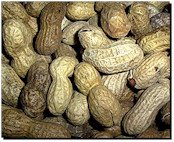Fit the seventh: Fun will now commence or, the curse of organised rejoicing
“Long experience has taught me that people nagged at by an anxiety to improve the minds of their fellow men are in real life among those least likely to do so.”
Sir Peter Medawar, The Limits of Science
 Can there be any grown-up modern reader of Dickens’s A Christmas Carol who does not agree with Scrooge? Of course Christmas is humbug, and the humbuggery gets worse every year. Yet – even independently of religious background - a few Jehovah’s Witnesses notwithstanding – nearly everyone participates because everyone else does.
Can there be any grown-up modern reader of Dickens’s A Christmas Carol who does not agree with Scrooge? Of course Christmas is humbug, and the humbuggery gets worse every year. Yet – even independently of religious background - a few Jehovah’s Witnesses notwithstanding – nearly everyone participates because everyone else does.
Dickens was not alone in making cynical appeals to mass sentimentality, and neither - when it comes to forced public rejoicing - do Christmas (or despots) have the monopoly on it. As any journalist or PR officer will tell you - a week never passes that has not been appropriated by someone or other for the celebration of their peculiar virtues. I was pleased to see that, at the time of writing this entry it was (auspiciously) World Mental Health Day, but it could just as well have been just another day in the International Year of Mountains or National Fish and Chips Week, and it probably (almost certainly) was. Some of these mass festivities, such as the UK’s Science Week for example, are state-sponsored; some are charitably inspired, some commercial.
State or international sponsorship brings big budgets, web sites, merchandising, and usually involves the dishing out of cash to enthusiasts to put on events. Their usual function is to coerce the young into doing something uncool - thereby standing in grave danger of making it even more uncool than it already is. Charity events are smaller in scale, and may pool the resources of several organisations. Industry ones are usually the bright idea of some trade association and may be backed by the Confederation of British Industry and a Department of State into the bargain.
Official rejoicing like this is all but unavoidable if you are involved in public relations. Most folk in this game are paying lip service to one or more such initiatives at any one time. My colleagues in the Institute of Physics, for example, had 2005 to look forward to after the International Year of Physics was proclaimed by the United Nations. And in case this sounds smug of me, for my own sins the International Year of Plant Earth has been proclaimed by the UN General Assembly for 2008, with yours truly as Chair of its Outreach Programme Committee. There is, alas, no such thing as innocence. (However, I hope that this initiative may be saved from the failures of others as a result of applying the principles enunciated here... more of which below.)
Apart from generating solidarity among the troops (which organisers of these events nearly always forget about, despite this being the only genuine PR benefit of them) even this rarely goes much further than a warm sensation of having "done something". (That traditional phrase of the concerned but clueless - "getting the message across" - usually comes in about here too. “We must do something to get our message across” really means “We have no idea what our message is, or to whom it should be addressed but whatever it is and whoever they are, it must be got across to them at all costs.”)
But such mass rejoicing rarely gets anything very much across to anyone. In fact, it is a kind of madness. So why doesn't it all stop? A clue lies in another fact about these celebrations – the fact that nearly all have in common the fact that they originate in collectives acting as professional drumbeaters and torch carriers, who then employ commercial PR consultants. The former must be seen to be doing something, else their members will stop paying their subscriptions. And the latter exist to relieve them of money.
The only organised rejoicings that make any real sense in external PR terms are the wackier commercial ones. If well timed, a National Association of Fish and Chip Shops, for example, could easily arrange a photo call for a minister to tuck into a piece of battered cod by the roadside (I see John Prescott carrying this off very well), just when he wants to emphasize how much a man of the people he is. The event satisfies the first rule of good PR - that it should be useful to everyone. Fish and chips are promoted, members of the National Association feel good and renew their subscriptions, and the Mouth of the Humber enjoys his moment in The Sun.
NAG Week
But for the rest, the prospect is less rosy. Imagine a fictitious (but not unrealistic) National Awareness of Gravel (NAG) Week sponsored by industry collectives – in this case I expect it would include such an august body as the Quarry Products Association plus (eyes down for a full house) the CBI and DTI. Picture now a ruinously expensive display at the crossing of the Committee Corridor in the Palace of Westminster. TV monitors glumly play a promotional video for whose budget you could have employed Mr Steven Spielberg. Two suits anxiously patrol the expensively hired area, surveying the face of every lingering lobbyist and researcher, while MPs sweep by at high velocity. Should they attempt to buttonhole one, she will freeze them with her lawyer's eyes, tell them that impeding a Member on her way to a Division is an offence, and threaten to have them thrown out by the Serjeant-at-Arms. Feel free to laugh – I have actually seen this happen.
Later that night, the exhibit is moved to a desultory reception in a marquee on the Terrace. Five company suits and ten hired-in agency PROs - together with Palace of Westminster catering staff, all compulsory and all on your bill - eagerly await the arrival of one MP so drunk he thinks they represent the National Association of Buffalo Mozzarella Manufacturers - a powerful influence in his East Midlands constituency's Regional Development Area. (Names have been changed to protect the guilty, but I have seen this too.) If said MP ever finds out who they really are, he won't remember in the morning; while the swanky, spot-varnished folder of NAG Week bum-fodder will be left behind in whatever bordello or wheelie-bin said MP decides to set up home for the night.
The people who launch themselves into these orgies of self-promotion are usually suckered into it because nobody tells them what a waste of time they are in terms of what they wish to achieve. They either have no in-house PR expertise, or (as frequently happens) they ignore it. They then find themselves at the mercy of their PR consultants who are there to do business and are never asked the right question. The client says - "Can you arrange NAG Week?" You can easily guess the answer. If it involves getting their hands on large wads of your cash, they can do anything. If they were approached with the same cash and the question "Tell us if it is worth arranging a NAG Week", the result might cost the same - but perhaps everyone else would be saved a load of pointless work, and cupboards might remain unburdened by yet more chipped promotional mugs with ghastly logos, to remind us all of the sad fiasco.
Out and proud
Is there anyone for whom timetabled mass rejoicing is good PR? Well, yes, and the whole tactic can be seen as a misapplication of something that embattled minorities do rather well. It is in fact part of the problem with such events that people at large (more sophisticated than they are thought to be, as usual) recognise the preferred tactic of the soi disant unloved. It takes a leaf out of the book written by liberation movements, for whom the tactic works because liberation is mainly about raising internal political awareness. The promoters of NAG Week, alas, think they are looking outward, not inward. Gay Pride, a classic example, graces the streets of London in or around June each year. It is about assertion of identity and spreading confidence among the similarly oriented. It is the PR of defiant celebration. But it is unlikely that Gay Pride ever convinced a heterosexual person to be gay, for all that onlookers may secretly envy its participants’ fashion instincts and dancing ability. Indeed in many, the sight of Gay Pride induces apoplexy. But then, that’s partly the point. Being out and proud means not giving a damn for what people think, and showing it. That's fine for Gay Pride; but hardly on-message for NAG Week.
Gay Pride, a classic example, graces the streets of London in or around June each year. It is about assertion of identity and spreading confidence among the similarly oriented. It is the PR of defiant celebration. But it is unlikely that Gay Pride ever convinced a heterosexual person to be gay, for all that onlookers may secretly envy its participants’ fashion instincts and dancing ability. Indeed in many, the sight of Gay Pride induces apoplexy. But then, that’s partly the point. Being out and proud means not giving a damn for what people think, and showing it. That's fine for Gay Pride; but hardly on-message for NAG Week.
Despite the expense (perhaps because of it), the aggregates lobby ends NAG Week exhausted, with warm feelings of solidarity, post orgiastic glows to do with having spent their money, and a sensation of having “done something” and "got the message across". The rest of humanity (if it has registered the event at all) may well be left with the nagging impression that they have become aware of yet another militant minority to whose special interests and sensitivities they must now pretend to be sympathetic and considerate. The medium of official rejoicing carries an implied message that is out of kilter with the explicit one. To many, NAG Week undoubtedly said: "We are out and proud, digging holes in your back garden. Such is the way of our people. It is what we do. And we don’t care if you don’t like it."
Good PR tries to avoid such conflicts, but good PR is in short supply in science, for all the reasons we have discussed. Scientists think they know all about everything; they think PR is education; they want publicity on their own terms; they mis-define the problem and come up with misdirected false solutions; they resent spending money and cannot believe the answers when they do, because they conflict with their preconceptions. Their collectives are more used to spending money, but are alas no wiser, and suffer acutely from the urge to “do something” to “get their message across” because they are coming with the customers. Consequently they readily adopt the suggestions of those agreeable PR people with the fresh coffee and nice biscuits who stand to make most money out of them.
Nuts Let me now introduce you to the Tanganyika Ground Nut Scheme (TGNS). In the late 1940s, with austerity reigning still in war-creased Britain, the giant British corporation Unilever was having trouble getting its fats and the problem was expected to get worse. Unilever, then as now, made (among many other things) Lux and Lifebuoy soap, Stork and Blue Band margarine - all of which required a plentiful supply of vegetable oil.
Let me now introduce you to the Tanganyika Ground Nut Scheme (TGNS). In the late 1940s, with austerity reigning still in war-creased Britain, the giant British corporation Unilever was having trouble getting its fats and the problem was expected to get worse. Unilever, then as now, made (among many other things) Lux and Lifebuoy soap, Stork and Blue Band margarine - all of which required a plentiful supply of vegetable oil.
The man responsible for supplying these oils was Frank Samuel, the MD of a Unilever subsidiary called the United Africa Company. Samuel was deeply worried by what he saw as an impending vegetable oil famine. But his experience of Africa had taught him that vast uncleared spaces, possibly suitable for agriculture, lay untended in Tanganyika (now Tanzania). As luck would have it, the British Colonial Government had also been eyeing this land and wondering what, if anything, could be done with it.
Back home, the newly elected post-war Labour Government was trying to allay public fears that it was about to cut the food-oil ration. John Strachey, Minister of Food, liked the look of Samuel’s plan to clear 2.5 million acres of Tanganyikan bush for growing groundnuts. The idea was shown to a former colonial director of agriculture for Tanganyika, who saw in it a convenient plan to solve the mounting economic woes of British colonies.
This man, John Wakefield, spent three months evaluating the scheme - with extensive field visits to different parts of the country. He settled on an area called Kongwa in the central belt. Pedologists said the soil was fertile enough, and native people, it appeared, were already growing groundnuts. (Nothing like successful predecessors, as any barnacle larva knows.) Scientific information on rainfall was inadequate, but there was a railhead nearby - out of Dar-es-Salaam. The almost impenetrable scrub would have to be cleared - Wakefield recommended 3.25 million acres over six years. But how difficult could that be for modern technology? Somebody, they reasoned, would have the equipment and know-how. One Major-General Desmond Harrison was appointed to oversee the task, and set up operations in Kongwa, preparing for battle. By that time, disaster was already assured. First, the area had insufficient rainfall for growing groundnuts; the small plots of native people were small enough to be irrigated. Also, the soil, while fertile enough, consisted of a mixture of clay and sand - which with a little rainfall set like concrete. Groundnuts are called groundnuts because they have to be dug up. Such matters had not been investigated, because the soil scientists had only been asked to comment on the soil’s fertility, not its setting properties. Last, the bush – whose clearance was assumed to present no obstacle to modern heavy machinery - proved to be as impenetrable as explorer Henry Morton Stanley had described it a century before. Contrary to expectations, nobody had the know-how, and the appropriate machines had yet to be invented. The Government had embarked upon a massive overseas venture of the scale of a Soviet five-year plan, on the basis of practically no reliable information whatever. And in charge they had placed a very competent military man, well used to planning military operations – which differ from all commercial operations in the one crucial respect that their cost is never an issue.
First, the area had insufficient rainfall for growing groundnuts; the small plots of native people were small enough to be irrigated. Also, the soil, while fertile enough, consisted of a mixture of clay and sand - which with a little rainfall set like concrete. Groundnuts are called groundnuts because they have to be dug up. Such matters had not been investigated, because the soil scientists had only been asked to comment on the soil’s fertility, not its setting properties. Last, the bush – whose clearance was assumed to present no obstacle to modern heavy machinery - proved to be as impenetrable as explorer Henry Morton Stanley had described it a century before. Contrary to expectations, nobody had the know-how, and the appropriate machines had yet to be invented. The Government had embarked upon a massive overseas venture of the scale of a Soviet five-year plan, on the basis of practically no reliable information whatever. And in charge they had placed a very competent military man, well used to planning military operations – which differ from all commercial operations in the one crucial respect that their cost is never an issue.
The Government sank £49,000,000 into the scheme - an astronomical sum at the time. No extra food oil at all ever reached the market. Meanwhile, it was left to journalists to expose the fiasco, which eventually became the subject of a book by Alan Wood (1950) and a famous exposé by legendary investigative reporter Fyfe Robertson. (Until the gaff was blown, newspapers had carried wholly fantastic reports cobbled together in London from colourful PR material in an act of laziness and complicity that was frankly shameful.)
Apart from scale, the only difference between TGNS and the variously named Public Understanding of/Engagement with Science (PUS/PEST) circus we see growing up today is that the Government of the late 1940s was wrong when it assumed that the proper expertise existed somewhere. Unfortunately, it does not exist (or if it does exist, has been ignored) among those bodies of whom the Government has chiefly asked the question - which is to say, its own Office of Science & Technology, the Royal Society and the British Association for the Advancement of Science. The result has been that these well-meaning organisations have unwittingly generated (and now wittingly foster) the circus that now surrounds this subject.
The people who report back to government about what has been achieved have no real way of telling whether what they are doing is right. However they do, by that time, have every interest in continued funding - just like the contractors in Tanganyika did. And the people who do know, and who generally haven’t been asked, remain silent (like the journalists writing about the TGNS from what Fyfe Robertson referred to as the drinking dens of Fleet Street) because they do not wish to make themselves unpopular with people they have to work with.
 So - where does this leave the International Year of Planet Earth? I hope to avoid the problems inherent in organised rejoicing by the main expedient of allowing ideas for the Outreach Programme to arise from grassroots, and not to impose the usual half-baked activities in a top-down manner. There is simply no way in which a room full of people can decide on $10 million worth of wise things to do that will be equally wise in every country in the world. People working in those countries should know what is needful for them in terms of outreach, and need to be encouraged to apply to the International Year for funding (actually co-funding) to see those plans realised. These then get badged, promoted and listed centrally by the Year, which then gradually accretes more and more activity to itself and achieves visibility by the process known in the trade as "doughnutting" (clustering round a speaking MP in the House of Commons, and thereby making the place look full because the cameras aren't allowed to pan). This addresses Earth science's main political weakness, which is fragmentation into petty subdisciplines (a process I call Balkanization).
So - where does this leave the International Year of Planet Earth? I hope to avoid the problems inherent in organised rejoicing by the main expedient of allowing ideas for the Outreach Programme to arise from grassroots, and not to impose the usual half-baked activities in a top-down manner. There is simply no way in which a room full of people can decide on $10 million worth of wise things to do that will be equally wise in every country in the world. People working in those countries should know what is needful for them in terms of outreach, and need to be encouraged to apply to the International Year for funding (actually co-funding) to see those plans realised. These then get badged, promoted and listed centrally by the Year, which then gradually accretes more and more activity to itself and achieves visibility by the process known in the trade as "doughnutting" (clustering round a speaking MP in the House of Commons, and thereby making the place look full because the cameras aren't allowed to pan). This addresses Earth science's main political weakness, which is fragmentation into petty subdisciplines (a process I call Balkanization).
Working in just the same way as the Science programme, we shall receive bids for support, and these bids will be evaluated by referees who are expert in those areas of communication specified in the bid - as well as Earth scientists. So an element of appropriate expertise will enter into the discussion, not just a bunch of unrealistic perceptions of worthiness from those who might know a lot about geology, but not a lot about magazines or radio or television.
If you would like to read more about how this (I believe) revolutionary approach intends to work, go to the Web site www.yearofplanetearth.org and download the Outreach Brochure for a fuller explanation.
Envoi
Phenomena like the TGNS arise spontaneously from the following four essential ingredients – of which malice is rarely if ever one.
- the availability of large amounts of (usually) Government money
- the best intentions on all sides, matched only by
- ignorance of practicalities among the interested parties, and
- the ultimately unstoppable dependence of all concerned upon continued spending,
- apparent activity and reports of (imaginary) success.
Let us in the next fit examine the PUS/PEST circus’s main players, and their motivations.


0 Comments:
Post a Comment
<< Home